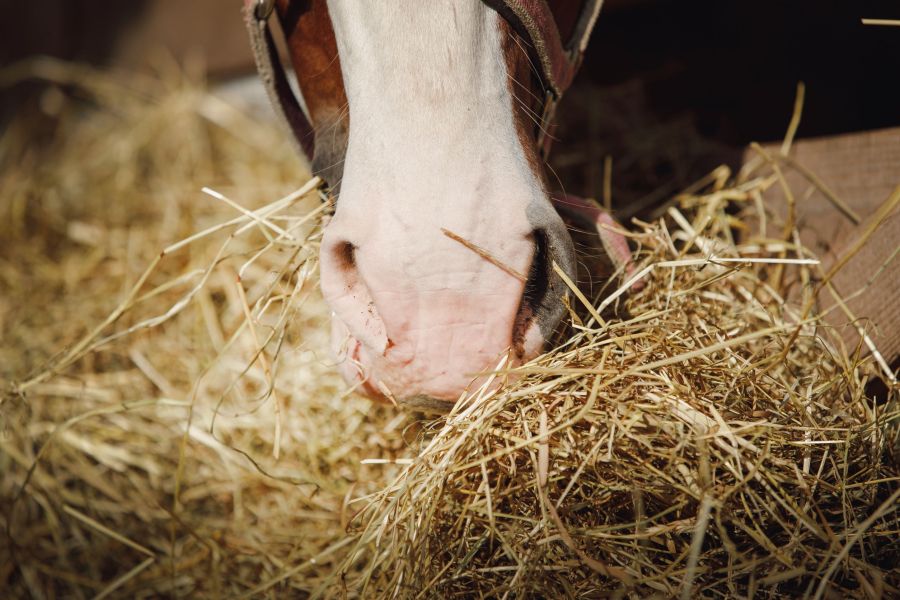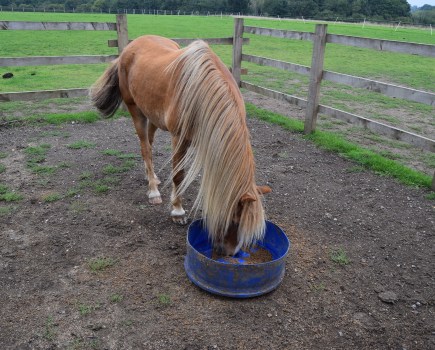Veterinary surgeon Richard Hepburn, who is a specialist in equine internal medicine, has revealed how feeding horses 80% of their daily forage during the day can help to reduce their risk of gastric ulcers, which is one of the leading causes of claims on horse health insurance policies.
Speaking at Saracen Horse Feeds’ Equine Health & Nutrition Seminar recently, Richard discussed the latest research which has proved that horses are more likely to suffer from ulcers if they are starved in the daytime rather than at night.
“If you want to make stomach ulcers, starve the horse. It’s really easy, you can do it in two to five days,” he said.
“A very clever lady called Louise Husted took that model further — 12 hours of starvation — and what she showed was if you do it from 7am in the morning until 7pm at night you will get ulcers.
“If you re-feed those horses, treat their ulcers, make the stomach happy again [and] then do the same period or duration of starvation — but now you are doing it from 7pm at night until 7am in the morning — no ulcers.
“The risk period for ulcer formation in horses appears to be the daytime.”
Daytime forage bias
Richard went on to discuss a ‘daytime forage bias’, which supports Louise’s research into gastric ulcers in horses. It suggests mimicking a horse’s natural behaviours by feeding the majority of their forage in the day.
“If you are dealing with the slightly chubby show horse, slightly chubby leisure horse, you are going to be forage-restricting them [and] they are going to need less food,” continued Richard.
“In order to make their stomach a happier place, think about instituting the 80:20 daytime forage bias. So you’ve taken 80% of their 24-hour forage ration and you are now giving it to them [between] 7am and 7pm.
“That’s going to maximise the buffering effect on their stomach, reducing the likelihood of ulcers forming,” explained Richard.
“If you look at the voluntary intake of feed by horses, what they tend to do is eat in the day, a little bit in the evening up to midnight, and then they sleep.
“So what we’re doing is providing them with food which is appropriate to their normal lifestyle if you give them the choice.”
View this post on Instagram
Limiting time without food
Independent equine nutritionist Donna Case told Your Horse that horses should not be left for more than four hours without access to forage.
While this isn’t an issue for those horses living out and with access to grass, it can prove difficult for stabled horses or those who need to have their grass intake limited.
“For stabled horses, this timescale can become a challenge, so consider buddying up with a friend to provide hay/haylage nets little and often,” advises Donna.
“You may find you need to get to the stables much earlier in the morning or later in the evening than you anticipated.”
Timing and amount of exercise is key
Considering what time you ride and feed your horse can also help manage the symptoms of equine ulcers according to Dr Ben Sykes, associate professor in equine internal medicine at Massey University in New Zealand.
He told Your Horse there are two distinct gastric syndromes in horses, one affected by intensity of exercise and the other by the amount.
In short, intensity of exercise influences squamous disease, whereas the amount of exercise influences glandular disease.
“Over the course of a week, the total number of minutes a horse spends at trot, canter or gallop will contribute to the risk of squamous disease,” he said.
“Exercise is also significant in relation to glandular ulcers, but for these ulcers it’s the number of days exercised per week, not the intensity or duration that is relevant.”
Dr Ben Sykes explains more here
Main image: copyright Shutterstock









